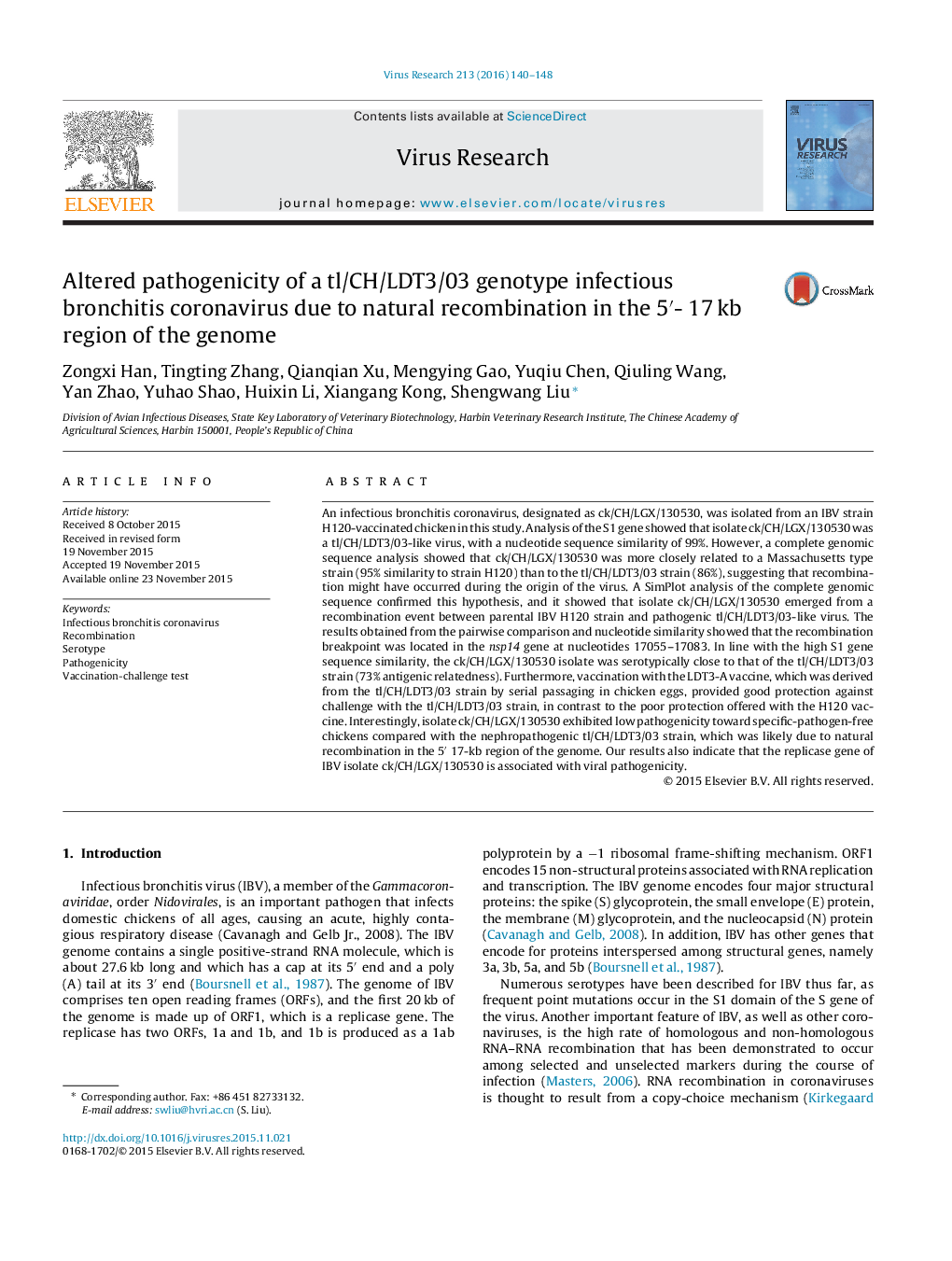| Article ID | Journal | Published Year | Pages | File Type |
|---|---|---|---|---|
| 3427903 | Virus Research | 2016 | 9 Pages |
•Recombination accounts for the emergence of IBV variants.•Strain ck/CH/LGX/130530 is originated from recombination events between a pathogenic tl/CH/LDT3/03- and H120-like strain.•Recombination event occurred in the 5′ end of the Gene 1 region did not result in changes in the genotype, serotype, and protectotype of the IBV.•The replicase gene of IBV ck/CH/LGX/130530 isolate is associated with viral pathogenicity.
An infectious bronchitis coronavirus, designated as ck/CH/LGX/130530, was isolated from an IBV strain H120-vaccinated chicken in this study. Analysis of the S1 gene showed that isolate ck/CH/LGX/130530 was a tl/CH/LDT3/03-like virus, with a nucleotide sequence similarity of 99%. However, a complete genomic sequence analysis showed that ck/CH/LGX/130530 was more closely related to a Massachusetts type strain (95% similarity to strain H120) than to the tl/CH/LDT3/03 strain (86%), suggesting that recombination might have occurred during the origin of the virus. A SimPlot analysis of the complete genomic sequence confirmed this hypothesis, and it showed that isolate ck/CH/LGX/130530 emerged from a recombination event between parental IBV H120 strain and pathogenic tl/CH/LDT3/03-like virus. The results obtained from the pairwise comparison and nucleotide similarity showed that the recombination breakpoint was located in the nsp14 gene at nucleotides 17055–17083. In line with the high S1 gene sequence similarity, the ck/CH/LGX/130530 isolate was serotypically close to that of the tl/CH/LDT3/03 strain (73% antigenic relatedness). Furthermore, vaccination with the LDT3-A vaccine, which was derived from the tl/CH/LDT3/03 strain by serial passaging in chicken eggs, provided good protection against challenge with the tl/CH/LDT3/03 strain, in contrast to the poor protection offered with the H120 vaccine. Interestingly, isolate ck/CH/LGX/130530 exhibited low pathogenicity toward specific-pathogen-free chickens compared with the nephropathogenic tl/CH/LDT3/03 strain, which was likely due to natural recombination in the 5′ 17-kb region of the genome. Our results also indicate that the replicase gene of IBV isolate ck/CH/LGX/130530 is associated with viral pathogenicity.
